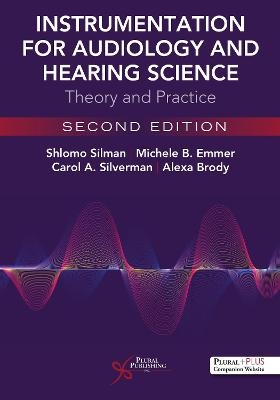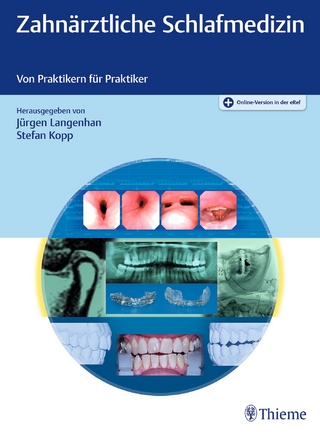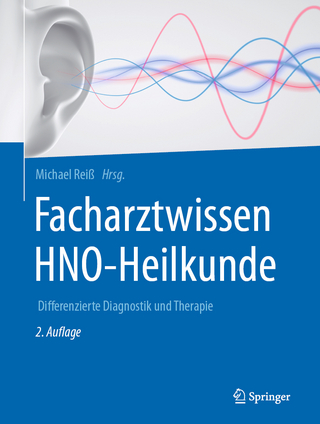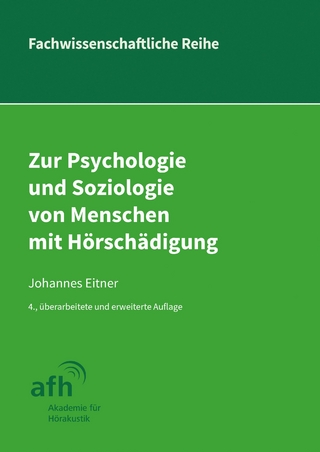
Instrumentation for Audiology and Hearing Science
Plural Publishing Inc (Verlag)
978-1-63550-226-8 (ISBN)
Understanding the array and complexity of instrumentation available to audiologists and hearing scientists is important to students, beginning clinicians, and even seasoned professionals. The second edition of Instrumentation for Audiology and Hearing Science: Theory and Practice is a comprehensive and accessible look at instrumentation used in these fields for research and clinical purposes. The expert authors introduce the laws of physics as they relate to audiology and hearing science and explain a range of concepts in electronics directly related to instrumentation used in audiology and hearing science, such as filtering and immittance (involving acceptance i.e., admittance, and rejection i.e., impedance of energy), explain the fundamental instrumentation concepts in mathematics, physics, and electronics in a systematic manner including only the necessary formulae and basic scientific principles.
This unique professional text presents the fundamentals of the evolution of communication systems from analog to digital, including such concepts as digital signals, sound resolution, sampling, quantization and their applications to current technology such as video calls, noise canceling head phones, and CD players. In addition, the authors comprehensively cover calibration of test and research equipment and stimuli used in audiology and hearing science and clearly describe elements of electronics and digital technology as they apply to our everyday lives and experiences as well as to the fields of audiology and hearing sciences.
New to the Second Edition
New chapters on amplification, assistive listening devices, and vestibular assessment (electronystagmography and videonystagmography), geared toward audiology and hearing science students and professionals
Extensive reorganization for a smoother flow of information
Expanded focus on evidence-based practice
Informed by the authors' teaching, research, and clinical experiences, the original chapters have either been eliminated or completely updated to reflect current scientific and clinical theories
A PluralPlus companion website with practical step-by-step PowerPoint instruction and accompanying videos for the construction of direct- and alternating-current electrical circuits, as well as the construction of high-pass, low-pass, and band-pass filters
Shlomo Silman, MS, PhD, received his Master of Science from Columbia University and PhD in Audiology from New York University. He is Presidential Professor of Speech Communication Arts and Sciences, Professor of Audiology, Doctor of Audiology Program, and Graduate Center Professor of Hearing Sciences at CUNY and Fellow of the American Speech-Language-Hearing Association. He has authored and coauthored approximately 100 articles, books, and chapters. His honors and awards include being the first recipient of the American Academy of Audiology Research Achievement Award in 2000 and corecipient of the 2006 National Tibbetts Award (category of Medicine). Silman is also the recipient of a medal in 2001 from the Escola Paulista Medicina of the Universidade Federal de São Paulo, Brazil, for humanitarian work with persons with hearing impairment in São Paulo, Brazil, and for scientific achievements relating to research on middle ear effusion and auditory deprivation, as well as recipient of the 2002 Journal of the American Academy of Audiology Editor’s Award. He also has served as reviewer, editorial consultant, or assistant editor for various journals. **** Michele B. Emmer, PhD, Professor Emerita and former Chair of Speech and Hearing Sciences at Brooklyn College, City University of New York (CUNY) and former Professor of Audiology, Doctor of Audiology Program, Graduate Center (CUNY), received her Master of Science from Brooklyn College and her PhD in Speech and Hearing Sciences from the Graduate Center of CUNY. Her interests include middle ear effusion, acoustic reflex, adult-onset auditory deprivation, acclimatization, and hearing impairment in the elderly. She published many articles on these topics in medical, audiological, and scientific journals. She was listed in the CUNY Salute to Scholars 2 years running and received the college-wide award for Excellence in Teaching at Brooklyn College. She was coinvestigator and senior research director for several federal grants, principal investigator for two CUNY grants, and a principal investigator for a grant from the New York City Department for the Aging. Dr. Emmer holds two U.S. patents for a medical device with her coauthor Dr. Shlomo Silman. Dr. Emmer taught courses in speech and hearing for over 20 years. **** Carol A. Silverman, PhD, MPH, is Professor, Speech-Language Pathology and Audiology at Hunter College, City University of New York (CUNY), New York, NY; Professor, AuD Program and PhD Program in Speech-Language-Hearing Sciences, Graduate Center, CUNY, New York, NY. Dr. Silverman previously held an appointment as Hearing Scientist and Epidemiologist in the Departments of Otorhinolaryngology and Communicative Sciences at New York Eye & Ear Infirmary of Mount Sinai in New York City. Silverman has authored and coauthored several books and chapters and many peer-reviewed publications, and she has served as reviewer and editorial consultant for various journals in audiology, hearing sciences, and otolaryngology. Her research focuses on auditory deprivation; on various aspects of diagnostic audiology, including acoustic immittance and otoacoustic emissions; and most recently on binaural interference. She is a graduate of Wellesley College, and her graduate degrees include an MS in Audiology from Teachers College of Columbia University, PhD in Audiology from New York University, and MPH in Quantitative Epidemiology from New York Medical College. **** Alexa Brody, AuD, is a practicing audiologist who specializes in diagnostic evaluations and hearing aid amplification in Albany, NY. She received her AuD degree from the Graduate Center of CUNY. She holds an ASHA certificate of clinical competence-audiology (CCC-A) and is a Fellow of the American Academy of Audiology (F-AAA). Her special interests include deaf studies, tinnitus management, hearing aids, and assistive listening devices.
Introduction
Acknowledgements
Chapter 1. General Physics and Introduction to Sound Energy
Measurement
Area
Velocity
Acceleration
Force
Pressure
Work
Power
Intensity
Values to Remember
Chapter 2. Electrical Energy- Direct Current
Coulomb's Law
Current, Voltage, and Resistance
Ohm's Law
Series Resistance and Parallel Resistance
Direct Current Circuit
Chapter 3. Electrical Energy- Alternating Current
Introduction
Phasor Representation of AC
Square Wave
Analysis of a Square Wave
Power Transmission
AC Circuit Components
Resistive AC Circuit
Capacitors and Inductors
Series Capacitance and Parallel Capacitance
Series Inductance and Parallel Inductance04
Chapter 4. Filtering and Electrical Impedance
Impedance and Admittance
Filters
Low-Pass Filter
High-Pass Filter
Band-Pass Filter
Band-Reject Filter
References
Chapter 5. Building Communication Systems: Evolution from Analog to Digital
Introduction
Microphones
Loudspeaker/Earphone/Insert Receiver
Amplifiers
Transistors
Digital Communication Systems
Digital Signals
Quantization
Sound Resolution
Sampling
Sampling in Audio Systems
CD Players
Digital Signal Processing
Active Noise Cancellation
Chapter 6. Acoustic Immittance
Acoustic Immittance
Methods for Measurement of Static-Acoustic Middle-Ear Immittance
Calculation of Acoustic Admittance of the Middle Ear
References
Chapter 7. Amplification
Introduction
Hearing Aids
Hearing Aid Components
Additional Features of Some Hearing Aids
Directional Microphones
Telecoils (t-coil)
Wireless Connectivity
Remote Controls
Ambient Noise Control
Hearing Aid Styles
Hearing Aid Earmolds
Generic
Custom Earmolds
Earmold Materials
Earmold Impressions
Venting
Tubing
Introduction
ANSI Standard
Hearing Aid Couplers
KEMAR (Knowles Electronics Manikin for Acoustic Research)
Evaluating Hearing Aid Performance Using ANSI Standards
HA-1
HA-2
HA-2B
HA-3
Recommended Measurements, Specifications, and Tolerances
Curves
Frequency Range
Tolerance Method for Frequency Response Curve
Tolerances
Tolerance Template
Harmonic Distortion
Equivalent Input Noise Level (EIN)
Examples of Current Instrumentation for the Measurement of Hearing Aid Parameters
Hearing Aid Analyzers: Test Boxes
Calibration of Hearing Aid Test Systems
Amplification for Children
Advantages of a Bilateral Hearing Aid Fitting
Head Shadow Effect
Enhanced Speech Understanding
Binaural Squelch
Binaural Redundancy
Improved Sound Quality Along with Better Spatial Balance
Improved Sound Localization
Prevention of Auditory Deprivation
Binaural Interference
Identification of Binaural Interference
Auditory Training
References
Chapter 8. Assistive Listening Devices
Introduction
What Are Assistive Listening Devices (ALDs)?
ANSI/ASA S3.47-2014
Classification of ALDs
Components
Test Equipment
Standard Conditions
Equipment Setup
Settings of Controls
Recommended Measurements
Types of ALDs
Frequency Modulation (FM) Systems
Classroom Audio Distribution Systems (ADS)
Hearing Loop Systems
Infrared (IR) Systems
Bluetooth Technology
Comparative Analysis of ALDs
Discussion
Emerging Themes
Future Research
Conclusion
References
Chapter 9. Vestibular Assessment: Electronystagmography and Videonystagmography
Electro-Oculography
Video-Oculography
Neurophysiologic Mechanisms Underlying ENG and VNG
The Final Common Pathway
Saccadic System
Smooth Pursuit System
Neural Integrator
Vestibulo-Ocular Reflex (VOR) and VOR Fixation
Optokinetic (OKN) Testing
Caloric Irrigations
Calibration
Temperature
Timing
Distance and Angle
Flow
Eye Movements
VNG Goggles
Advantages and Disadvantages of ENG and VNG
ENG/VNG Test Battery
Oculomotor Tests
Static Positional Tests and Dynamic Positioning Testing
Caloric Testing
Sample VNG from a Normal Patient
Saccadic Test Results
Results of Smooth Pursuit Testing
Gaze Testing
OKN Testing
Head-Shaking Nystagmus Test
Positional and Positioning Test Results
Caloric Testing
Chapter 10. Test Equipment Used in Audiology and Hearing Science
Audiometer
Oscillators
Standard Oscillator
Square Wave Oscillator
Detailed Description of the Stimuli Generated by an Audiometer
Critical Band
Speech Noise
Instrumentation for Acoustic Immittance
Components of the Immittance Device
Otoacoustic Emissions - Instrumentation
Electrophysiologic Instrumentation
Auditory Evoked Potentials
Stimulus Used in Auditory Evoked Potentials (ABR)
Click Stimulus
Repetition Rate
Polarity
Universal Newborn Hearing Screening (UNHS)
References
Chapter 11. Instrumentation for Calibration and Calibration of Test Stimuli
Equipment Used for Calibration
Equipment for Calibration of Air Conduction
ANSI Requirements for Calibration of Audiometric Signals
Calibration
Frequency Accuracy
Total Harmonic Distortion (THD)
Rise and Fall
Linearity
Sound-Field Testing
Bone Conduction Calibration
Artificial Mastoid
Type 4930
Larson Davis AMC 493A
Calibration of High Frequencies
Calibration of the Acoustic Admittance Device
Calibration of Admittance Unit of Measurement
Calibration of Probe Signal Intensity
Calibration of the Activating Stimuli
Calibration of the Pneumatic System
Calibration of the Otoacoustic Emissions Probe Signal
Calibration for Auditory Evoked Potentials
Calibration for Masking Noise
Noise Levels in the Test Environment
References
Index
| Erscheinungsdatum | 03.12.2019 |
|---|---|
| Verlagsort | San Diego |
| Sprache | englisch |
| Maße | 178 x 254 mm |
| Themenwelt | Medizin / Pharmazie ► Medizinische Fachgebiete ► HNO-Heilkunde |
| ISBN-10 | 1-63550-226-8 / 1635502268 |
| ISBN-13 | 978-1-63550-226-8 / 9781635502268 |
| Zustand | Neuware |
| Haben Sie eine Frage zum Produkt? |
aus dem Bereich


